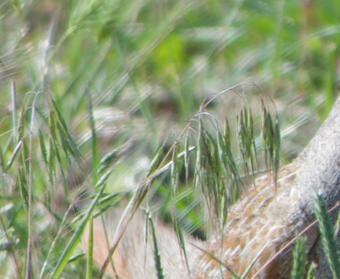Invasive annual grasses, such as cheatgrass (Bromus tectorum) and medusahead (Taeniatherum caput-medusae), are one of the most significant stressors to rangeland ecosystems in the western U.S. Their expansion and dominance across this area are the most damaging ecosystem agents on this iconic landscape.
United States Geological Survey (USGS) Forest and Rangeland Ecosystem Science Center (FRESC), Cheatgrass and Medusahead, 2020.
Photo by Justin L. Welty, USGS

